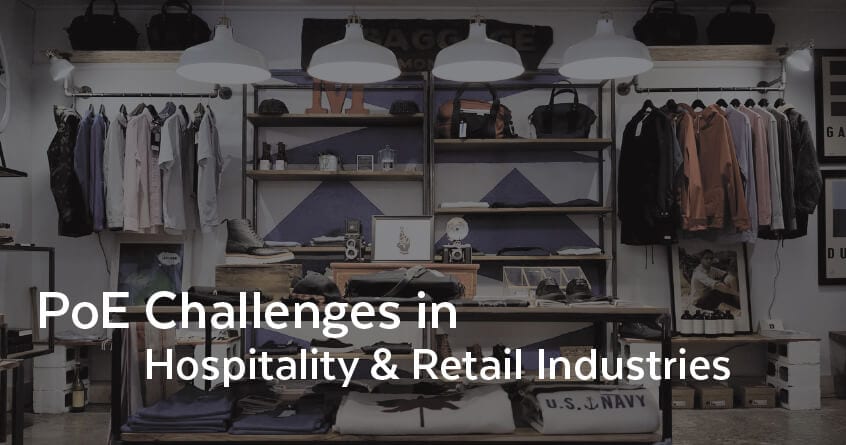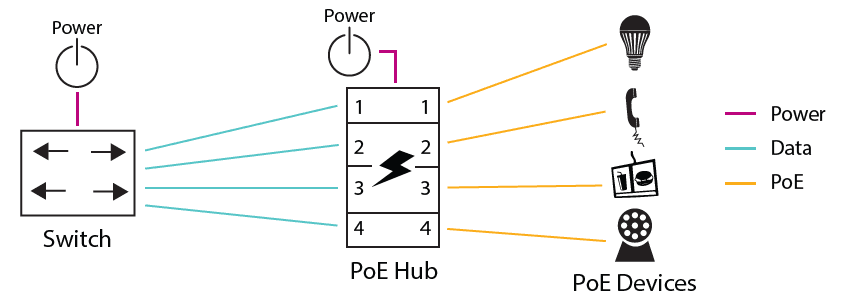Voice-controlled devices – including Amazon’s Alexa and Apple’s Siri – have become commonplace in many homes around the world.
We’ve grown accustomed to controlling our environment with our voices. Temperature, lighting, and even the TV channel can all be adjusted with a simple voice command.
Nowadays, hotel guests are beginning to expect the same advanced technology in their hotel rooms. Guests have a more satisfactory stay when their rooms are outfitted with IoT technology.
Likewise, thanks to the emergence of e-commerce powerhouses such as Amazon dominating the market, retail stores are doing everything they can to retain their customers. Outfitting their stores with new technology is a fantastic way to keep shoppers coming back, despite the growing popularity of online shopping.
The Internet of Things market is already large and is only expected to grow. In addition, IoT devices are powered by PoE technology, whose market is also going to expand in the coming years.
Unfortunately, despite PoE’s many benefits, it has some downfalls as well. In this article, we’ll be taking a closer look at some of PoE’s real-world complications, specifically in the hospitality and retail industries.
PoE Limitations
PoE and the Internet of Things are the future of the hospitality and retail industries – in fact, some companies are beginning to install PoE in their hotels already.
PoE is being used by hotels for several purposes, including lighting fixtures and, more recently, Hilton’s new Connected Room.
Rather than having to adjust temperature, lighting, and the TV manually, guests will soon be able to control every aspect of their room with their voice using a mobile app.
In addition, many hotels – including the West Baden Springs Hotel – are beginning to use energy-efficient PoE lighting fixtures in their buildings.
Retail stores are also beginning to use PoE devices, such as PoE lighting and POS (Point of Sale) Systems.
These hotels and retailers, however, have to overcome a few obstacles associated with PoE. Cost, installation, and range are all issues that must be contended with.
Installation Cost
Developing the technology needed for a Connected Room – one that you can control with your voice and/or your mobile phone – has already largely been developed.
Thanks to companies like Amazon and Apple working on the Amazon Alexa and Siri, voice recognition software has come a long way.
With that being said, developing the technology is not the biggest hurdle for hotels that are trying to implement IoT into their rooms – rather, the problem lies with the cost of replacing their networks with the necessary PoE technology.
Although Power over Ethernet is cost-effective in the long run, it can still be pricey to install an entirely new PoE network, especially when you have to replace an existing network.
Now, you have to factor in the sheer size of a hotel’s network, which probably has to handle more devices than any other application.
Think about it: aside from the guests’ devices, hotel’s have to operate security cameras, dozens of wireless access points, they often have an IP phone in every room, etc.
On top of that, growing demand for IoT and PoE enabled devices means, if hotel owners want to keep up with the times – which they’ll have to do unless they want to go out of business – they’re going to have to install even more Internet devices in their hotel.
For many hotel owners, they cannot afford to pay the cost of retrofitting a hotel with PoE switches, hubs, and cables.
Limited Range
PoE cables have a maximum effective range of around 100 meters – after that, the cable’s ability to transfer data begins to quickly diminish.
Hotels would have to install Power Sourcing Equipment on every floor of the building and purchase either a multitude of PoE switches or PoE hubs to accommodate their large network demand.
Large retail stores with several floors also have to contend with this limitation of PoE.
Some transmission inefficiencies have deterred would-be PoE lighting users from installing the technology in their building. If the Power Sourcing Equipment is placed too far away from the lighting fixtures, PoE will not be able to provide adequate power to the devices.
That’s why it’s important to place your Power Sourcing Equipment and Powered Devices in close proximity to one another. In some cases, PSE for lighting fixtures can be installed closer to the lights themselves, rather than by the rack of data switches that are often further away.
A PoE extender could be used to add an additional 100 meters of range to a PoE signal, though even with a PoE extender, a maximum effective range of 200 meters isn’t that far when we’re talking about a large hotel with devices on every floor.
Lack of IT Personnel
There are two kinds of PoE network switches: managed and unmanaged switches.
Unmanaged switches are supposed to work automatically, and they’re best suited for small home or office networks that don’t require any complex configurations.
An unmanaged switch’s settings cannot be tampered with, as it’s supposed to be self-adjusting.
Unmanaged switches are cheaper, but they aren’t advanced enough to operate a network as large as a hotel’s. If anything went wrong – which is more likely to happen with a network comprised of unmanaged switches – the entire network would crash and it would be hard for IT personnel to alleviate the problem.
Managed switches, on the other hand, are not as easy to use, yet they provide far more control for an additional cost. IT professionals can fine-tune a network with a managed PoE switch, especially if it’s a high-end PoE switch.
Many hotels and retailers, especially those owned by smaller companies, don’t have a large budget for IT. After installing the advanced system, those in the hospitality and retail industries would also have to hire trained IT professionals to manage the network.



